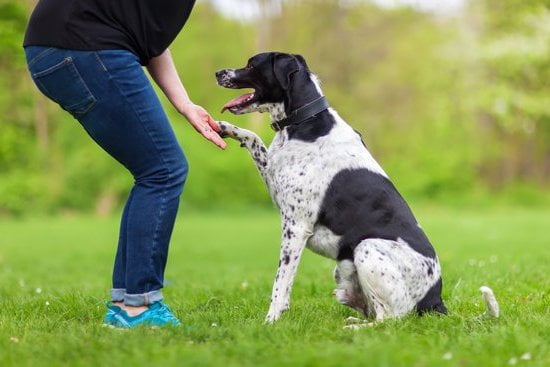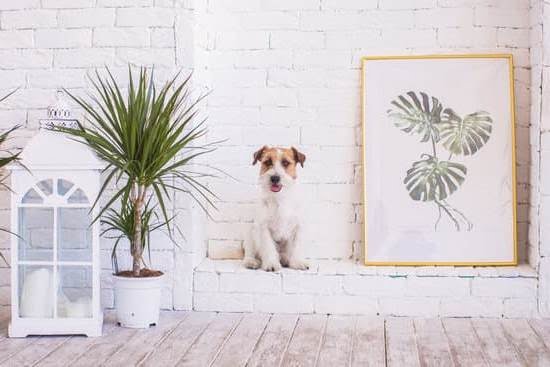What is mat training for dogs? Mat training is a highly effective and versatile method of teaching dogs to stay in one designated spot. It involves using a specific mat or blanket as a marker for the dog to learn to settle on and remain until released. In this article, we will delve into the concept, purpose, benefits, and techniques of mat training for dogs.
Mat training serves multiple purposes that benefit both the dog and its owner. First and foremost, it teaches the dog self-control and relaxation, which is especially useful in high-stress situations. Additionally, it provides a clear boundary for the dog to understand where it should stay, whether at home or in public settings.
In this comprehensive guide, we will explore everything from how to start mat training with your dog to choosing the right type of mat for your specific needs. Additionally, we will discuss advanced concepts and applications of mat training, as well as common mistakes to avoid during the process. Let’s dive into the world of mat training for dogs and uncover its many benefits and potential opportunities for success.
Benefits of Mat Training
Mat training for dogs offers a wide range of benefits that can greatly improve a dog’s behavior and obedience. One of the main advantages of using mats for training is that they provide a clear boundary for your dog to understand.
This helps in creating a designated space for your dog to learn commands and remain focused during training sessions. The mat becomes a familiar and comfortable spot for the dog, making it easier to teach them the desired behaviors.
Another benefit of mat training is that it can be easily transferred to various locations, allowing your dog to maintain their training regardless of the environment. This means that whether you are at home, in a park, or visiting friends and family, your dog will be able to follow the same commands and behaviors when directed to their mat.
Mat training also encourages impulse control in dogs by teaching them to settle down and relax on their mat, which can be particularly useful in situations where there are distractions or visitors. Additionally, using mats for training provides an alternative to traditional punishment-based training methods, promoting positive reinforcement instead.
When considering what type of mat to use for training, it’s important to choose one that is non-slip and comfortable for your dog. A good option is a durable and washable mat that is specifically designed for dogs. It’s also helpful to select a mat with clearly defined boundaries so that your dog can easily recognize their designated area.
Overall, mat training proves to be an effective and versatile method for teaching dogs new behaviors while providing them with a safe space of their own. Whether you’re working on basic obedience or tackling more advanced skills, utilizing mats as part of your dog’s training regimen can lead to positive results.
| Benefits | Advantages |
|---|---|
| Clear boundary for the dog | Designated space for learning commands |
| Transferable training location | Promotes impulse control |
| Positive reinforcement method | Non-slip and comfortable mats recommended |
How to Start Mat Training
Mat training for dogs is a valuable tool that can help in obedience training, behavior modification, and even agility training. If you’re wondering what mat training for dogs is and how to get started, this step-by-step guide will help you introduce mat training to your furry friend.
To begin mat training, you’ll first need to choose the right mat for your dog. There are different types of mats available, including rubber mats, yoga mats, and crate mats. Consider the size of your dog and the intended use of the mat when making your selection. Once you have chosen a suitable mat, it’s time to introduce it to your dog.
Steps to Introduce Mat Training
- Place the mat in an area where your dog spends time.
- Encourage your dog to explore the mat by using treats or toys.
- Associate a cue word such as “place” or “mat” with the act of going onto the mat.
Once your dog understands that going onto the mat brings rewards, you can start incorporating basic commands such as sit and stay while on the mat. Gradually increase the duration of time that your dog spends on the mat before rewarding them. With consistent practice and positive reinforcement, your dog will learn to associate the mat with calmness and focus.
By following these simple steps, you can effectively introduce mat training to your dog and pave the way for more advanced training techniques in the future.
Choosing the Right Mat
When it comes to mat training for dogs, choosing the right mat is essential for a successful training experience. Different types of mats can be used for this purpose, and it’s important to understand their suitability for mat training.
Types of Mats
There are various types of mats that can be used for mat training, including rubber mats, yoga mats, and specialized training mats designed specifically for dogs. Rubber mats provide slip-resistant and durable surface for dogs to stand on, while yoga mats offer comfort and traction. Specialized dog training mats often come with features such as treat pockets or sensory elements to enhance the training experience.
Suitability for Mat Training
When choosing a mat for your dog’s training, consider the size and breed of your dog, as well as the specific training goals. For larger breeds, a bigger and sturdier mat may be necessary to accommodate their size and weight. For smaller breeds or puppies, a softer and more cushioned mat may be more suitable.
Considerations
Another important factor to consider when choosing a mat for dog training is the ease of cleaning and maintenance. Mats that are easy to clean and maintain will ensure a hygienic training environment for your dog. Additionally, look for mats that are non-toxic and safe for your dog to use regularly.
By understanding the different types of mats available and their suitability for mat training, you can choose the best option that meets your dog’s needs and enhances their training experience.
Mat Training Techniques
Positive Reinforcement
One of the most effective mat training techniques for dogs is positive reinforcement. This involves rewarding your dog with treats, praise, or toys when they successfully engage with the mat. By associating the mat with positive experiences, dogs are more likely to seek out and remain on the mat during training sessions.
Capturing Behavior
Capturing behavior involves rewarding your dog when they naturally choose to go onto the mat without any prompting. This method helps reinforce the idea that being on the mat is a desirable behavior and encourages them to do so more frequently.
Shaping Behavior
Shaping behavior involves breaking down the desired behavior into smaller steps and gradually shaping your dog’s actions through rewards. For example, you can reward your dog for looking at the mat, then for taking a step towards it, and eventually for lying down on it. This gradual approach helps dogs understand what is expected of them and encourages them to perform the desired behavior.
Using these various mat training techniques can help accelerate your dog’s learning process and make training more enjoyable for both you and your pet. Incorporating positive reinforcement, capturing behavior, and shaping behavior into your mat training routine can lead to successful results and a well-trained canine companion.
Common Mistakes to Avoid
Mat training for dogs can be a highly effective way to teach them impulse control, relaxation, and obedience. However, there are certain common mistakes that dog owners should avoid in order to ensure the success of mat training.
One common mistake to avoid is using the mat as a form of punishment. The purpose of mat training is to create a positive association with the mat, so forcing or coercing your dog onto the mat can have the opposite effect. It’s important to use positive reinforcement and encouragement rather than punishment when introducing your dog to mat training.
Another mistake is rushing the process. Some dog owners may expect their pets to immediately understand and comply with mat training, but it takes time and patience. Rushing the process can lead to frustration for both the dog and the owner, so it’s important to take small steps and gradually build up the duration of time spent on the mat.
Additionally, inconsistency in commands and expectations can hinder the progress of mat training. It’s crucial for all family members or individuals involved in training the dog to use consistent cues and signals when practicing mat training. This helps prevent confusion and ensures that your furry friend understands what is expected of them.
By being aware of these common mistakes, dog owners can maximize their success with mat training and help their pets develop good behavior and self-control.
| Common Mistakes | How to Avoid |
|---|---|
| Using the Mat as Punishment | Use positive reinforcement; avoid coercion |
| Rushing the Process | Take small steps; gradually increase duration |
| Inconsistency in Commands | Use consistent cues; ensure everyone involved follows through |
Advanced Mat Training
Once your dog has mastered the basics of mat training, you can take their skills to the next level by exploring advanced concepts and applications of this training method. Advanced mat training can help your dog further develop their self-control, focus, and obedience in various situations.
Here are some advanced mat training concepts and applications for dogs:
1. Distraction Training: Gradually introduce distractions while your dog is on the mat to test their ability to maintain focus and self-control. This could include having people or other animals move around them, or introducing enticing toys or food nearby.
2. Boundary Control: Use the mat as a tool to teach your dog boundary control. For example, you can train them to stay on the mat when guests come over or when they are in a busy environment such as a park or outdoor event.
3. Scent Work: Incorporate scent work into mat training by placing treats or toys under the mat and encouraging your dog to use their sense of smell to find them. This can enhance their mental stimulation and reinforce their association with the mat as a positive place.
4. Complex Commands: Expand your dog’s repertoire of commands while on the mat, such as teaching them to lie down, roll over, or perform other tricks while remaining on the designated spot.
By implementing these advanced concepts and applications of mat training, you can continue to challenge and engage your dog while strengthening their overall behavior and obedience. Keep in mind that consistency, patience, and positive reinforcement are key elements in advancing your dog’s abilities through mat training.
Success Stories
Mat training for dogs has proven to be a highly effective method for teaching and reinforcing positive behaviors in our furry friends. Many dog owners have shared their success stories, showcasing the significant impact that mat training has had on their pets.
One common success story involves using a mat to teach a dog to stay in a designated area while visitors come to the door. This not only helps prevent jumping or excessive barking but also provides the dog with a safe and comforting space during potentially stressful situations.
Another success story comes from using a mat to help with impulse control and self-control during mealtimes. By having the dog wait on their mat before being allowed to approach and eat their food, many owners have reported a decrease in begging, rushing to the bowl, and overall better manners during mealtime. These are just a few examples of how mat training can positively impact the behavior and well-being of our canine companions.
Some dogs may even struggle with anxiety or fear-based behaviors, and mat training has been instrumental in helping these dogs feel secure and calm in different environments. By introducing mats in various locations such as parks, cafes, or even vet clinics, dogs can learn to associate the mat with safety and comfort, ultimately reducing their anxiety levels.
These success stories highlight the versatility of mat training and its ability to address various behavioral issues while promoting positive experiences for both dogs and their owners.
Conclusion
In conclusion, mat training for dogs is a highly effective and beneficial method for teaching obedience and shaping behavior. Through the use of mats, dogs can learn to associate specific behaviors with certain locations, leading to better communication and understanding between pet and owner.
This form of training offers several advantages, including improved focus, increased impulse control, and reduced anxiety in dogs. By providing a clear structure and consistent cues, mat training can help establish boundaries and create a positive learning environment for dogs.
It is essential to understand that mat training is not just about teaching dogs to sit or stay on a designated spot. It is about promoting self-control, building confidence, and strengthening the bond between the dog and its owner.
Whether it is for basic obedience or advanced tricks, utilizing the right techniques and methods will ensure successful mat training for dogs. Additionally, choosing the appropriate mat for training plays a crucial role in the overall effectiveness of this training method.
Ultimately, by incorporating mat training into your dog’s routine, you can foster good behavior in various settings and situations. It is important to remember that every dog is unique and may respond differently to training methods. However, with patience, consistency, and positive reinforcement, mat training can be a rewarding experience for both you and your furry companion.
Frequently Asked Questions
How Do I Teach My Dog to Use a Mat?
Teaching your dog to use a mat involves using positive reinforcement and consistency. Start by introducing the mat as a designated place for your dog to go, and reward them when they use it. With patience and practice, your dog will learn to associate the mat with a positive experience.
What Is the Purpose of Mat Training?
The purpose of mat training is to provide your dog with a specific spot where they can go to relax or settle down, especially in situations where you want them to stay in one place. It also helps teach impulse control and obedience, as your dog learns to stay on the mat until released.
How Do You Teach a Dog to Lay on a Mat?
To teach a dog to lay on a mat, start by luring them onto the mat with a treat or their favorite toy. Once they are on the mat, use a cue such as “mat” or “go to your spot,” and reward them for staying there.
Gradually increase the duration of time they stay on the mat before rewarding them, building up their ability to settle in that spot for longer periods of time.

Welcome to the blog! I am a professional dog trainer and have been working with dogs for many years. In this blog, I will be discussing various topics related to dog training, including tips, tricks, and advice. I hope you find this information helpful and informative. Thanks for reading!





